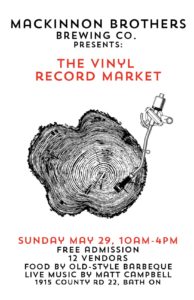 Beer snake! Never seen one from that point of view before. Thanks to beer and baseball specialist Shana for the perspective from the bleachers at one of the last Cubs games of the year. Like my Red Sox, they sorta similarly sucked this season. Reminds me of, what… the first forty years of my life? Ah, the good old days. Anyway, one must be positive. You know, I wrote that header up there before I wrote anything this week. Why? Because there seems to be a lot of bad news out there. Bad in the world and fairly bad in the beery bit of that world. So, as always, I shall try to be the voice of optimism, of good cheer and positivity. I tell myself this again… as I start out…
Beer snake! Never seen one from that point of view before. Thanks to beer and baseball specialist Shana for the perspective from the bleachers at one of the last Cubs games of the year. Like my Red Sox, they sorta similarly sucked this season. Reminds me of, what… the first forty years of my life? Ah, the good old days. Anyway, one must be positive. You know, I wrote that header up there before I wrote anything this week. Why? Because there seems to be a lot of bad news out there. Bad in the world and fairly bad in the beery bit of that world. So, as always, I shall try to be the voice of optimism, of good cheer and positivity. I tell myself this again… as I start out…
First up, let’s check the shipping news. Despite what the keen beer trade statisticians who are good and making numbers bendy say, apparently there is a global slowdown coming so fast and hard that trans-Oceanic shipping lines are cutting back:
Ocean carriers are canceling dozens of sailings on the world’s busiest routes during what is normally their peak season, the latest sign of the economic whiplash hitting companies as inflation weighs on global trade and consumer spending. The October cancellations are a sharp reversal from just a few months ago, when scarce shipping space pushed freight rates higher and carriers’ profits to record levels.
What’s this got to do with beer? Export and imports. Except for big buyers like Ontario’s LCBO, most good beer likely does not ship by the full container load. But it still could be good news for the small and local even if not so good for the forces of international craft. So… less beer may be moving on the high seas. We see the same thing happening across the bar. Not so good. The export geared breweries of Britain may have a lead on this lesson, learning the hard way due to Brexit… though to be fair those with a local market focus also seem to be suffering. Jings. Tough days. Soon it will all be about nods, winks and word of mouth if you want to find the good stuff.
Never one to be glum… or even fixed in one spot for very long, The Beer Nut went on a holly joliday and reported back from the BXLBeerFest in Brussels which offered beers sort of in the round, reminding me of the Tardis’s console:
I made arrangements to attend last year. That didn’t work out but tickets rolled over and so there I was, if not quite front at least fairly centre, on the last weekend in August 2022. Sixty invited breweries occupied eight circular pods, each pouring four or more beers at a time. The selection was carefully chosen from Belgium, Europe and North America, with an emphasis on the wild side of fermentation, like saying “we invented lambic, show me what you can do”.
Circular pods! How futuristic! I hope they wore garish wide-lapelled purple, green and/or yellow corduroy suits, too. And played the best of Seals and Crofts on a loop. But that’s just me. Bright. Cheery. Elsewhere, Alistair wrote about dreich this week and (other than knowing you have no idea how to pronounce it because I can) I liked this bit:
Saturday in central Virginia was dreich, gey dreich, as the remnants of Hurricane Ian drifted up the Shenandoah Valley. It was a day for comfort clothes, pots of tea, and whatever mindless shite the kids wanted to watch on the idiot box – I am starting to worry about their love of screens, but that’s not the point of my post. I pondered lighting the first fire of the season, but the wind was whipping along at 20mph and I have an in built fear of a chimney fire. Into this revelry of gloom came a text message from Jason at Devils Backbone…
Speaking of dreich, I see that Jeff has reported on fifth anniversary that relic of 2017, the “independent” seal offered by the US Brewers Association to its membership. For me, it was an extension of 2012’s “crafty” botch that sought to rally beer buyers around the BA’s central “one ring to rule them all” branding approach to selling craft beer in the US.* While (i) these sorts of things may have given comfort to big national craft and, conversely, (ii) the more recent explosion of small and local breweries fundamentally altered the discussion, I was most surprised by this tidbit in the article indicating how they may have missed the boat – they don’t ask the only people that matter:
Beer in general has been lagging, but craft beer is no longer the bright segment in a declining category. In recent quarters, only imports seem to be bucking the trend—while craft tracks with other domestic categories. And customers themselves? It’s hard to say. The Brewers Association hasn’t done any recent polling on the question—or made it public, anyway.
Note: if there was good news from consumers, polling results would have been made public. Verdict: dud.
And I don’t know what to make of the news that the very large object identifying as BrewDog won a court case. From the BBC News report I see that the defendant “failed to respond to the court” which seems to indicate that a Statement of Defence (as we would call it in Ontario) was not filed. Which, if that is the case, leads to a default judgement which effectively does not represent a ruling on the merits. That being said, I am somewhat concerned that all the sins of craft have merged into this one matter, as it is (i) being a big mean brewery, and (ii) one that is for the most part elsewhere. The resulting response seems to be dumping all errors on this single example, accepting without any serious question the deftly played PR sidestep and perhaps even wiping the balance of craft’s record clean – perhaps comforting and perhaps even re-numbing ourselves to the more widely spread problem still all around us. Moving on craft? **
Which is the opposite of what Beth Demmons does in her Prohibitchin’ series*** – which this month features Omolola Olateju of Black Girls Drink who makes this excellent point:
“The complications of getting these alcohol-related licenses, LOLOLOL!” she laughs, cynically but genuinely. “I really do wonder about the gatekeeping. Right now in the drinks industry, there are financial barriers and resource barriers — it’s really painful.” One change she believes would help alleviate said barriers would be more BIPOC people getting involved at the legislative level to identify and correct problem areas. “I’d be really curious — and I make some positive assumptions — around how that would change the industry,” she says. “That to me is the next equity front: people in ‘the system.’”
Speaking of the system… note : not Pete’s best photo… that is Pete, right? And grey? Really. Talk about yer dreich! No… not Pete… no, the logo’s background!!****
: not Pete’s best photo… that is Pete, right? And grey? Really. Talk about yer dreich! No… not Pete… no, the logo’s background!!****
The reporting on reporting is real this week as Stan chose two stories about wine could well apply to beer: (i) one about the way that the story behind a drink made the drink more appealing and even more valuable to the buyer and (ii) the second …
…another instance where the word “wine” could be replaced with “beer” in two instances. “The wine industry itself is much to blame with its history of pretentiousness, and its absurd rituals and vocabulary that convey the message that one must be a connoisseur before one can enjoy wine.”
I mention this as the two seem to be two side of the same coin to my mind: the myth making as obstacle making and the gatekeeping of the faux connoisseur… as obstacle making! Strip those away and what do you have? You know… other than a world without bevvy’s consulto-judge-journalist class?***** Well, what you would have is reality like… bowling and beer – in Walsall!
We met up with Dan Gilbert and Coxy and explained why we had had left The Lion only for Dan to exclaim that he loves UB40. Which made me laugh. We headed to The Wharf Bar. There was karaoke. I was urged to have a go and despite it being free as opposed to the £20 in the bowling alley I wasn’t feeling it. There wasn’t many people in and I like a good sized baying audience when I perform.
Before you get all caught up in that moment and go off to just do anything anywhere enraptured by the prospect of beer and bowling – BEWARE! Via CookieNet!, we have learned about the most violent pub in Britain along with its, err, customer conduct standards:
He is said to have required an operation to stop the bleeding, with the wound he survived snagging an artery, with police noting customers were “served alcohol by the bar staff” despite it “being evident someone is seriously injured”. At the time of the incident, police also said that management knew “the risks of its customer base yet chooses to ignore this”.
Yikes! Finally, a white lab coated eggheads have taken credit for all that you love in beer:
Belgian investigators have improved the flavor of contemporary beer by identifying and engineering a gene that is responsible for much of the flavor of beer and some other alcoholic drinks. The research appears in Applied and Environmental Microbiology, a journal of the American Society for Microbiology. For centuries, beer was brewed in open, horizontal vats. But in the 1970s, the industry switched to using large, closed vessels, which are much easier to fill, empty, and clean, enabling brewing of larger volumes and reducing costs. However, these modern methods produced inferior quality beer, due to insufficient flavor production.
Modern! Bad. Bad modern… but… craft is modern… is craft bad? Is that what science is saying? Hmmm. As you ponder that, please check out the updates from Boak and Bailey mostly every Saturday and also from Stan more now on a Monday than almost ever! Check out the weekly Beer Ladies Podcast, and at the OCBG Podcast which is on a quieter schedule these days – and also sometimes, on a Friday, posts at The Fizz as well (Ed.: we are told ‘tis gone to 404 bloggy podcast heaven… gone to the 404 bloggy podcast farm to play with other puppies.) And the long standing Beervana podcast (Ed.: which I have missed from this list for some unknown reason.) There is a monthly sort of round up at The Glass. (Ed.: that seems to be dead now… nope, there was a post on July 25th… in 2022 even.) There is more from DaftAboutCraft‘s podcast, too. And sign up for Katie’s (Ed.: now very) irregular newsletter, The Gulp, too. And check out the Atlantic Canada Beer Blog‘s weekly roundup. Still gearing up, the recently revived All About Beer has introduced a podcast, too. (Ed.: give it a few weeks to settle in and not be as agreeable… not sure this went very far…) Plus follow the venerable Full Pint podcast. And Fermentation Radio with Emma Inch. The AfroBeerChick podcast as well! And also look at Brewsround and Cabin Fever. And Ben has his own podcast, Beer and Badword (Ed.: …notice of revival of which has been given… still not on the radio dial…) And remember BeerEdge, too, and The Moon Under Water. There was also the Beer O’clock Show but that’s now gone after a ten year run.
*You will recall that Flying Dog quit the BA over this sort of thing at the time.
**Well, more you than me. I am still off the gluten (happily) so leaning on a little wine or a drop of cider if I need a hit – though I did a test with a can of Guinness. My histamines slept though the whole pint.
***The award winning series!
****Yes, there is… though to be fair… he may well have been suffering from the IPA yips!
*****Because who the hell wants to be an expert in things that have no perceived value?? No, best to stick to the plan.

 Here I am. Still on vacation but at least at home making dinners rather than forking out for them. Let’s be clear. I am not a cheap date when out and about but at the same time I do have my limits. Big city fun can hit that after a few days so nice to be back in the backyard for week two. Well, once the rain lets up. Gotta say, though, Montreal is my favorite big city even though I am
Here I am. Still on vacation but at least at home making dinners rather than forking out for them. Let’s be clear. I am not a cheap date when out and about but at the same time I do have my limits. Big city fun can hit that after a few days so nice to be back in the backyard for week two. Well, once the rain lets up. Gotta say, though, Montreal is my favorite big city even though I am  Wow. If that is you, get out. What ever it is you do. And one more thing. I hadn’t expected that this beer would be as good as it turned out to be. Glutenburg Pale Ale out of Quebec. A bit of a rarer find in the Ontario LCBO but out there if you check the inventory. Made without barley but perfectly tasty as a base beer in one’s life. Which is what it might become. Through an odd sequence of absolutely low level medical matters it turns out that I may have a degree of gluten intolerance. See, I had to have a small four stitch operation on my right eyelid, which led to an observation about how my left eye sat, which led to a couple of CT scans in nearby quieter county town hospitals which led to an ENT guy sticking a camera into my sinuses, which led to connecting the dots to a very high wisdom tooth, which led to a removal operation, which led to me having a very tiny bit of my skull removed as a door for the wisdom tooth operation. All of which left me breathing better… unless I ate bread. Hmm. Bread made me puff up a bit. All over. Unpleasantly so on rare occasions. And feel like I had hay fever. Stuffed. So I dropped bread. Clearer head. Breathing better. Had a beer. All came back. Uh oh. So I bought this beer. Didn’t come back. Hmm. I had put the feeling when having a beer down to water bulking up or general alcohol reaction but it appears to be a third aspect of the beer – the gluten. Going to keep up the experiment for a bit. All of which I mention as ungraphically as I can as a recommendation to try it yourself for a week perhaps. See, being puffed is not good. Tiny important passages restrict. Blood pressure rises. Things not ticking along optimally. Leads to other things… more serious things.
Wow. If that is you, get out. What ever it is you do. And one more thing. I hadn’t expected that this beer would be as good as it turned out to be. Glutenburg Pale Ale out of Quebec. A bit of a rarer find in the Ontario LCBO but out there if you check the inventory. Made without barley but perfectly tasty as a base beer in one’s life. Which is what it might become. Through an odd sequence of absolutely low level medical matters it turns out that I may have a degree of gluten intolerance. See, I had to have a small four stitch operation on my right eyelid, which led to an observation about how my left eye sat, which led to a couple of CT scans in nearby quieter county town hospitals which led to an ENT guy sticking a camera into my sinuses, which led to connecting the dots to a very high wisdom tooth, which led to a removal operation, which led to me having a very tiny bit of my skull removed as a door for the wisdom tooth operation. All of which left me breathing better… unless I ate bread. Hmm. Bread made me puff up a bit. All over. Unpleasantly so on rare occasions. And feel like I had hay fever. Stuffed. So I dropped bread. Clearer head. Breathing better. Had a beer. All came back. Uh oh. So I bought this beer. Didn’t come back. Hmm. I had put the feeling when having a beer down to water bulking up or general alcohol reaction but it appears to be a third aspect of the beer – the gluten. Going to keep up the experiment for a bit. All of which I mention as ungraphically as I can as a recommendation to try it yourself for a week perhaps. See, being puffed is not good. Tiny important passages restrict. Blood pressure rises. Things not ticking along optimally. Leads to other things… more serious things. Vacation? Haven’t had one of those since… 2019? Actually going places and looking at things? Don’t know how I will manage.
Vacation? Haven’t had one of those since… 2019? Actually going places and looking at things? Don’t know how I will manage. 
















